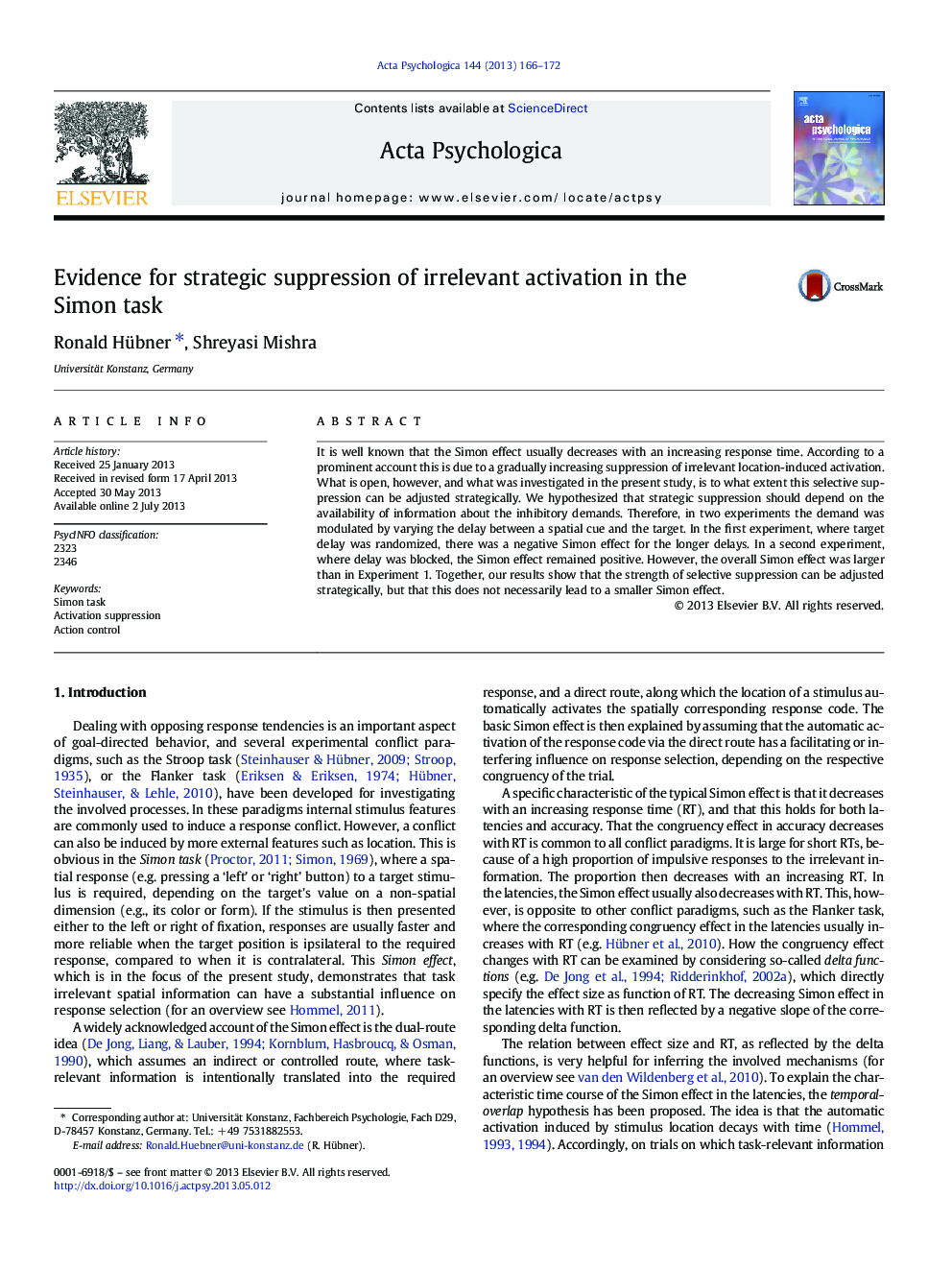| Article ID | Journal | Published Year | Pages | File Type |
|---|---|---|---|---|
| 919912 | Acta Psychologica | 2013 | 7 Pages |
•Activation suppression in the Simon task and possible strategies were investigated.•Results show that activation suppression can be adjusted strategically.•Strategic adjustments did not produce a smaller Simon effect.•Suppression was adjusted to meet accuracy requirements.
It is well known that the Simon effect usually decreases with an increasing response time. According to a prominent account this is due to a gradually increasing suppression of irrelevant location-induced activation. What is open, however, and what was investigated in the present study, is to what extent this selective suppression can be adjusted strategically. We hypothesized that strategic suppression should depend on the availability of information about the inhibitory demands. Therefore, in two experiments the demand was modulated by varying the delay between a spatial cue and the target. In the first experiment, where target delay was randomized, there was a negative Simon effect for the longer delays. In a second experiment, where delay was blocked, the Simon effect remained positive. However, the overall Simon effect was larger than in Experiment 1. Together, our results show that the strength of selective suppression can be adjusted strategically, but that this does not necessarily lead to a smaller Simon effect.
